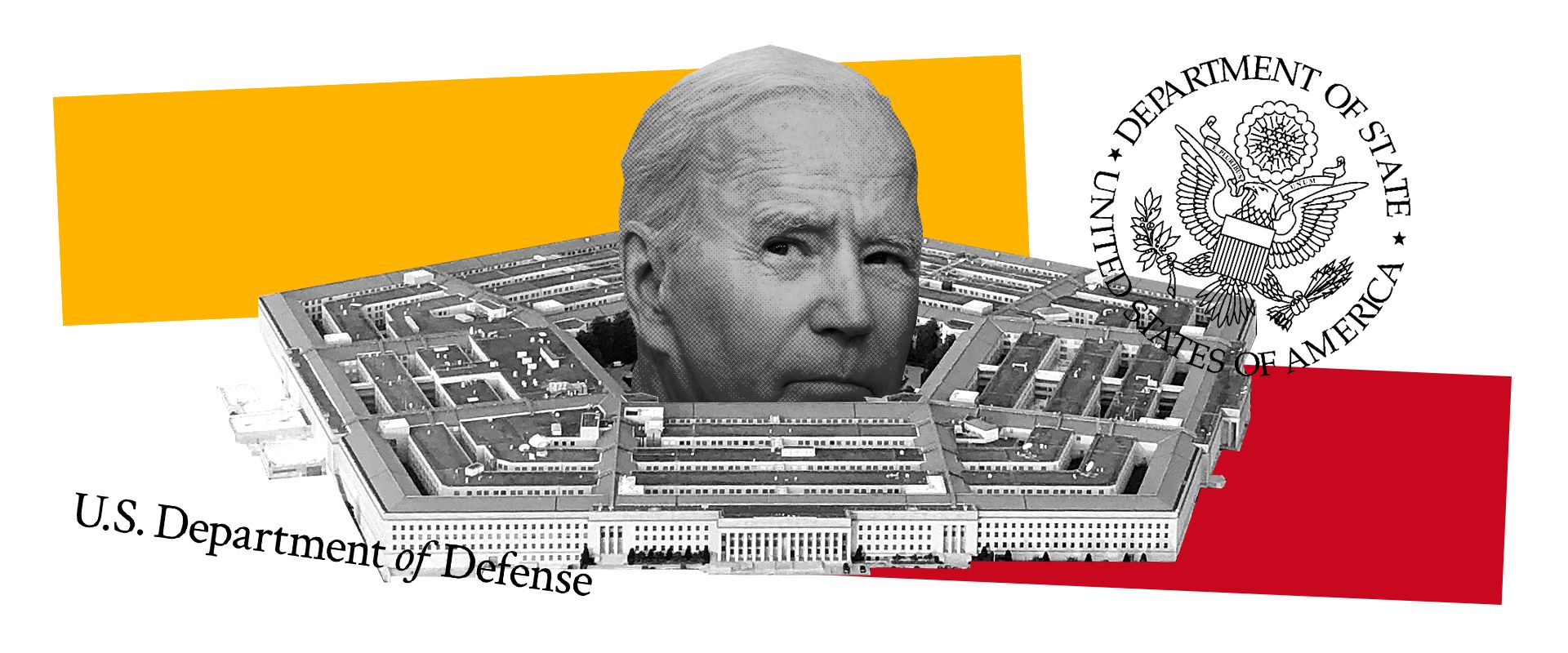In the largest leaks scandal of the decade, countless secret Pentagon and NATO documents have come to light. The chaos is huge, but we summarized the most important points.
The world’s attention has been on the Pentagon leaks in April: Pages of highly classified US documents began circulating on social media, introducing the public to the behind-the-scenes of the Russo-Ukrainian war in early April. The volume of documents grew with time, and the hundreds of pages questioning alliances and operations exploded like a bombshell in one of the biggest leak scandals of the decade. The wrongdoer has since supposedly been caught by the US, and the Pentagon’s damage control has begun. Public opinion has taken a turn for the worst from Washington’s perspective: the papers flooded the media, everyone ran after the story, and unconfirmed information and ambiguous denials poured in. At first, we did not even know what to watch or listen to, but after two weeks, deep silence took over. The Pentagon document leaks disappeared from the headlines, so it is time to summarize what we know or assume to know. We review the key points of the Pentagon leak on Ukraine in this article, but there is an important note: it is not clear whether all of the documents are original or whether there may be fakes. We have listed the most likely information and their refutations!
1. Are these documents real?
As confirmed by US officials, some of the documents circulating on social media are certainly authentic, but not necessarily everything should be believed. For example, some of the documents greatly overestimated the number of Ukrainian dead while underestimating Russian losses, meaning we can talk about Russian falsification and disinformation in that case. However, the reactions of US officials leave no doubt that the leak is real: The State Department quickly began damage control, while the FBI launched a hunt for the leaker. The US estimates the number of Russian soldiers killed and wounded in the invasion at between 189,500 and 223,000, while the number of Ukrainian causalities is between 124,500 and 131,000, according to Washington.
2. It was a leak, not a hacking
The documents were photographed and uploaded in image format to social media platforms. The original source was a hidden Discord server, from where the material was transferred to Twitter and Telegram. The papers have folding marks, so they were probably taken by an authorized person and then photographed in a safe place to leak the information.
3. Ukrainian troops are trained by the Western allies
Since the outbreak of the Russo-Ukrainian war, Kyiv’s Western partners have trained more than 60,000 Ukrainian soldiers, said Roderich Kiesewetter, a member of the German Bundestag, recently. Most of the soldiers currently undergoing training will return to Ukraine in May or June, and Germany is providing the greatest assistance to the Ukrainian army, especially in training commanders and non-commissioned officers. This fact is already being publicly discussed, but the leaked documents also point out that probably the Ukrainian troops armed with Western weapons, and some of them trained in the West, could be the backbone of the next major Ukrainian counter-offensive.

4. The Ukrainian counterattack is planned in Washington
The leaks included documents about sensitive information on the aforementioned soldiers, along with equipment and combat vehicles, to launch the Ukrainian counter-offensive that has been rumored for months. The papers also include secret US and NATO plans to strengthen the Ukrainian army, but they do not contain any concrete military plans and are now 1.5 months old. This is a great advantage for the West as there is no description of the present situation, and it is easier to make corrections for the future based on the past state of affairs. According to the documents, Kyiv will have 12 brigades of troops, 253 tanks, nearly 900 infantry fighting and transport vehicles, and 147 artillery pieces by the end of April. A significant part of this equipment is Western technology. So, based on the above, the counterattack is planned in Washington, with Kyiv’s integral involvement. This is not surprising, as Western intelligence and reconnaissance had already played a crucial role in the success of the Ukrainian counterattacks in Kharkiv and Kherson oblasts, which pushed back the aggressor.
5. There are NATO units in Ukraine
According to the leaked documents, there are special NATO forces in Ukraine: The United Kingdom has 50 troops, followed by Latvia with 17, France with 15, the United States with 14, and the Netherlands with 1. It is not clear where these forces are or their tasks, but they are potentially special units that can assist in the operation of modern Western military technology. Still, the fact that special NATO troops are in Ukraine inadvertently reinforces the Russian narrative that „Russia is fighting NATO in Ukraine.” The UK is a major supporter of Ukraine but has not commented on the leaks; London was merely pointing out that we should not believe everything we read on the internet. But one thing is sure: there are NATO special forces in Ukraine, though most likely in a support and advisory role, and Western soldiers are not fighting in the trenches on the front line.
6. Ukrainian air defense on the verge of collapse
Some information indicates serious Ukrainian shortcomings in weapons, ammunition, and air defense supplied from the West. It is well-known that Ukrainian assets are dwindling, and Western support is only slowly coming. Training for combat equipment often takes months, and such a luxury as time is not available for Ukrainians when Russian missiles and drones are falling on their country. Kyiv is using up its ammunition stockpiles much faster than Western supplies can replenish them, and while there are plans to ramp up Western ammunition and missile production, time is still an issue. One report actually notes that the collapse of Ukraine’s air defenses is inevitable: some Soviet-made anti-aircraft systems have barely enough ammunition for a few days, and the 9K33 Osa and S-300 systems may be permanently shut down in early May due to ammunition shortages. These air defense units together still account for around 90 percent of Ukraine’s air defense. Western weapon systems are also short of ammunition, and the current situation might lead to the complete shutdown of Ukraine’s air defenses by 23 May, leading to catastrophic consequences as the Russians would have full control of the country’s airspace, meaning the ability to launch immediate strikes over most of Ukraine. The plight may be alleviated by the recent arrival of the first US Patriot air defense systems, which Kyiv’s forces can use to destroy aircraft, cruise missiles, and shorter-range ballistic missiles.
7. The US spies on its allies, including Ukraine
We must admit that nothing is surprising about this. We have all known for a long time that the US is engaged in total intelligence gathering, including spying on its allies. Washington even eavesdropped on Angela Merkel with some Danish help: the American National Security Agency (NSA), together with the Nordic country’s services, spied on allied European leaders by connecting to subsea cables under Danish territorial waters, gaining access to telephone conversations and data exchanges from German, French, Swedish and Norwegian politicians. The recently leaked documents revealed that the US intelligence has also monitored Hungarian, Israeli, and South Korean officials, Ukrainian generals, and several senior International Atomic Energy Agency employees. The leaks have caused a serious crisis of confidence among the Western allies and put Washington in an uncomfortable position as it may become more reluctant to share confidential information with partner countries in the future. A crisis of confidence generates conflicts everywhere.

8. Zelensky would attack Russia
Closely linked to the wiretaps, the US is also spying on Ukrainian President Volodymyr Zelensky. This is not surprising, but the release of the information is alarming for Kyiv, as it implies that their friendship with the Americans is colder. The leaked papers reveal that US intelligence knew that Zelensky suggested an attack against Russia at the end of February, more precisely against the Russian forces in the Rostov Oblast, bordering Ukraine. The operation was intended to be carried out with unmanned aerial vehicles, as Ukraine does not have long-range missiles. The leaked reports also discuss that Washington does not want to give long-range missiles to Ukraine because it fears that Ukraine would use them to launch attacks inside Russia, escalating the conflict and encouraging China to support Russia more intensely due to the emerging „NATO aggression.” The Ukrainian leadership, of course, denies all these claims.
9. Would Egypt give tens of thousands of rockets to Moscow?
Not only are Ukrainians running out of ammunition, but the situation is neither rosy in Russia. Moscow has already bought ammunition from Tajikistan and drones from Iran, but what shocked everyone is that Egyptian President Abdel Fattah el-Sisi and his senior advisers planned to produce and ship up to 40,000 rockets to Russia, which has significantly depleted its ammunition stockpile during its year-long invasion of Ukraine. Egypt wanted to carry out the operation in secret, and the Minister of State for Military Production, Mohamed Salah al-Din, reportedly told the President that he could ask his personnel to work more shifts if necessary as it was the smallest thing Egypt could do to thank Russia for its former assistance. Russia’s presence in Egypt is significant: the country’s first nuclear power plant is being built with Russian support, Russian agricultural exports are pouring into the country, and Russian tourists are spending their money in the Red Sea hotels instead of the West. On the other hand, while Egypt only represents 0.7% of the EU’s total trade, the EU accounts for 25%, and the US for 6.5% of Egypt’s trade. Therefore, Egypt’s economic exposure is a strong argument against a foreign policy shift towards Moscow, especially as Cairo has enjoyed a remarkably good relationship with the Western allies in recent years.
10. Russian elite commandos were basically massacred by their own leaders
According to the US secret intelligence reports, Spetsnaz forces (Moscow’s elite commando units) have suffered extremely huge losses in the war. A Spetsnaz combatant needs at least four years of special training, but Russian army commanders have been deploying them on the front line since the first days of the war, as their conventional infantry is ineffective in achieving a real breakthrough. According to the US papers, by the autumn of 2022, four of the five Russian Spetsnaz brigades have suffered significant losses, with three having a 90-95 percent casualty rate. And this data is from before the bloody, brutal siege of Bakhmut, where elite airborne troops were deployed after the failure of Wagner’s forces. Because of the length and complexity of the training, some analysts estimate that Russia will need at least a decade to rebuild its elite commando forces.
11. Kyiv has repeatedly threatened the Zaporizhzhia Nuclear Power Plant
As the Zaporizhzhia Nuclear Power Plant is currently controlled by Russia, according to the leaked documents, Ukraine attempted not only artillery but also commando attacks against the power station, risking a possible nuclear disaster. Russian sources reported that, for example, a Ukrainian military drone crashed in the immediate vicinity of the plant in early April.
12. Romania plays a vital role in the training of Ukrainians
Romania is quite a passive player in supporting Ukraine; at least, that is how it seems from an outsider’s perspective. However, the leaks revealed that Romania supports the Ukrainian army at least as much as Poland does, though according to the Romanian government, this is all speculation. Reportedly, Romania is playing a key role in the tactical preparation, training, and rehabilitation of Ukrainian soldiers and also helps transport equipment from the West and monitor the battlefield. In early March, for example, Bucharest conducted aerial reconnaissance with a manned aircraft and two drones. But the Romanian government does not want to disclose its support to Ukraine, mainly because it does not want to jeopardize the neutrality of the Republic of Moldova by exposing Chișinău to even greater Russian pressure. Furthermore, the war is close to Romania, and information and actions must stay hidden from the enemy.
13. The Serbian government would send arms to Ukraine
Serbia is the only European country that has so far refused to apply sanctions against Russia because of the invasion of Ukraine. Belgrade has excellent relations with Moscow; Air Serbia planes sometimes make three turns daily to the Russian capital. In this context, the leaked information that Serbia has agreed to arm Ukraine is particularly interesting. The document reveals that Serbia has refused to train Ukrainian soldiers but has made a commitment to supply arms, with the paper saying that Serbia has „the political will and military ability to provide weapons to Ukraine in the future.” Serbia’s Minister of Defense Miloš Vučević denied the US intelligence information, stressing that Serbia does not sell arms to any country involved in the conflict. „We have refuted such untruths more than ten times, and we are doing it again,” the minister said sharply.
14. Would Hungary transfer arms?
Officially, Hungary provides humanitarian aid but does not supply weapons to Ukraine. This is why the leaked report that Hungary may secretly help the Western countries to deliver weapons to Ukraine by offering the country’s airspace is very interesting. The leaked papers detail a plan to transfer the Mi-8 military helicopters from Croatia, and the indicated most likely scenario is that Ukrainian soldiers would fly the helicopters directly from Croatia to Ukraine through Hungarian airspace. On the other hand, the Hungarian Ministry of Defense has declared that Budapest will send neither weapons, ammunition, nor soldiers to Ukraine, and the Hungarian airspace remains closed for military supplies. So due to this reason, Croatian helicopters cannot fly over.

15. Janus-faced Turkey
Turkey has acted as a kind of mediator: negotiating the Ukrainian grain deal with Moscow, supplying drones and weapons to Kyiv, and maintaining close diplomatic relations with Russia. But the classified reports show a more nuanced picture as Turkey reportedly helps Russia and Belarus circumvent Western sanctions. The formula is simple: Turkish companies buy sanctioned Russian or Belarusian goods, which they then sell on European markets and vice versa. There has also been a report that the notorious Russian private paramilitary organization, the Wagner Group, is buying arms from Turkey, but this information cannot be confirmed by any independent, credible source.
16. South Korea and Israel under pressure
Although situated on the other side of the planet, South Korea also got involved: some leaked documents revealed private discussions between senior South Korean officials about pressure from Washington. They indicate that the United States is putting pressure on Seoul to supply more arms to war-torn Ukraine. The undated document also includes the South Korean officials’ concerns that the munitions intended for the United States will end up in Ukraine, although they were agreed to be for US use as South Korea has a principle of not sending weapons directly to a war zone. Israel is also mentioned in the leaked documents in a similar role as South Korea due to American pressure. The papers suggest that Washington has also urged the Israeli government to send arms to Ukraine, which has put Prime Minister Benjamin Netanyahu in an uncomfortable position as he has good relations with Russian President Vladimir Putin.
17. Was it necessary to change the Ukrainian plans?
Of course, after all this leaked information, the plans for the Ukrainian counter-offensive must probably be changed. Although the leaks did not contain specific military plans, they still did reveal many details about the state of the Armed Forces of Ukraine and the Western supplies. However, it is essential to note that it is not clear whether all the documents are genuine or whether there may be fakes that could further increase the disinformation chaos.
18. The 21-year-old leaker steps into the spotlight
The FBI has launched a hunt for the leaker due to the exigency of the case. And the suspect was found not much later: probably it is a 21-year-old man serving in the Air National Guard who disclosed the Pentagon intelligence and operational briefings and other classified documents. Jack Teixeira was arrested at his home in Massachusetts after an amateur mistake led to the alleged culprit: some of the leaked documents were photographed on a granite kitchen countertop, the very same one that a close relative of Teixeira posted photos of online. He worked for the US Air National Guard and had access to military intelligence systems. The Pentagon is now reviewing who has access to classified documents.
19. Whose interest was this?
Finally, a bit of speculation: who was interested in this leak? US investigators say Teixeira had no connection with Russian, Chinese, or other intelligence services. But the question remains: How could a 21-year-old airman working for the military intelligence unit carry out such a complex and lengthy leak? Some have even begun to suggest that the US is behind the leaks stirring up trouble and disinforming its adversaries: Russia and China. One thing is certain: the answer to this question is on the other side of the Atlantic, in the CIA offices.

Bodega and Crocs drops new clogs for outdoor adventures

Soul and Spirit—Estonian Music Days begins this week










